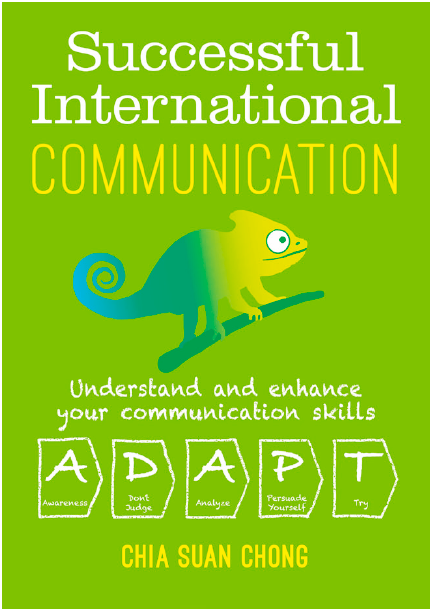Successful International Communication
Successful International Communication
by Chia Suan Chong Pavilion Publishing and Media Ltd 2018 978-1-912755-13-4

Miscommunication is a daily occurrence – and not just between people from different countries. About 25 years ago, I was a member of a multicultural team of professionals from various European countries, and although we all spoke fluent English, our meetings (and email correspondence) often suffered from communication breakdowns. The irony was that most team members were employed by public broadcasters and, in theory, should have been good at communicating. In the end, the project folded, partly due to the vagaries of EU funding but also, I felt at the time, because of genuine linguistic misunderstandings among the team members. I think we were all responsible for the break-up in some way, and if there is a lesson to be learnt from the above it is this: we must start with an awareness of our own part in this kind of failure in communication. Chia Suan Chong’s book is an excellent resource for anyone who is interested in, to use the title, successful international communication.
The sub-title of the book is ‘understand and enhance your communication skills’, and this is exactly what this very insightful volume delivers in under 200 pages of easy-to-follow text and practical exercises. Chong is a teacher and a trainer (rather than an academic), and this background as a practitioner is what makes the book so readable, not just for English language teachers and trainers, but for anyone wishing to enhance their communication skills. Incidentally, I have introduced the book to some C1/C2 students who thoroughly enjoyed reading sections of it – in fact, all of it is both comprehensible and compelling reading.
One of the reasons this book is essential reading for both new and experienced teachers of ESOL is that Chong is an excellent communicator both in life and on the page. Those who have witnessed her presentations live (recently carrying a baby in one arm at the IATEFL conference in Liverpool), or in webinars, will be aware of the clarity of her thought and the relevance of what she has to say about achieving successful communication.
From the outset, the style is personal, and within a couple of pages you feel you know who you are ‘talking to’; this is why I am glad the author is not an academic. The introduction neatly explains the structure of the book with its key features, and reminds us that ‘the anecdotes, cases and critical incidents ... in the book are not fictional. They are based on or inspired by real-life incidents ...’. The various tasks (with very clear instructions) are designed to encourage thought and reflection, either on one’s own or with a partner. To put it simply: they succeed in doing just that!
The two opening chapters (which we are exhorted to read before diving into the more practical aspects of improving our communication skills in international settings) provide a concise summary of some of the relevant key issues – such as What is ELF? Who owns English? What do we mean by culture, intercultural competence? etc. Some quite complicated theoretical considerations are nicely summed up in a few readily comprehensible pages, and conclude with Chong’s own model for enhancing communication, which she calls ADAPT. This is short for Awareness, Don’t judge, Analyse, Persuade yourself and Try, and is explained in more detail at the end of Chapter 2.
The rest of the book explores the following in eight themes: interpersonal skills, building relationships, collaborations and teamwork, getting the right message, listening actively, leadership communication, influencing, conflict management, and communication beyond words. These skills can be studied, explored, analysed and developed in any order by teachers, trainers or, indeed, the general reader – in fact, anyone who is interested in enhancing their communication skills, both face to face and virtually, and whether it is for personal or for professional purposes.
In addition to the easy-to-relate-to anecdotes, the book uses critical incidents and a variety of tasks for the reader to complete, and to reflect on, in order to promote greater self-awareness of issues such as trust, politeness, humour, the role of silence, non-verbal communication, etc, and how these might operate in different cultural settings.
This slim volume is a complete training manual which not only enhances the reader’s understanding of some of the theoretical underpinnings of intercultural competences but also provides useful practical lists of hints and tips for successful international communication. In this respect, it should be required reading for all new ESOL teachers, in particular.
Rakesh Bhanot London, UK
Comments
Write a Comment
Comment Submitted